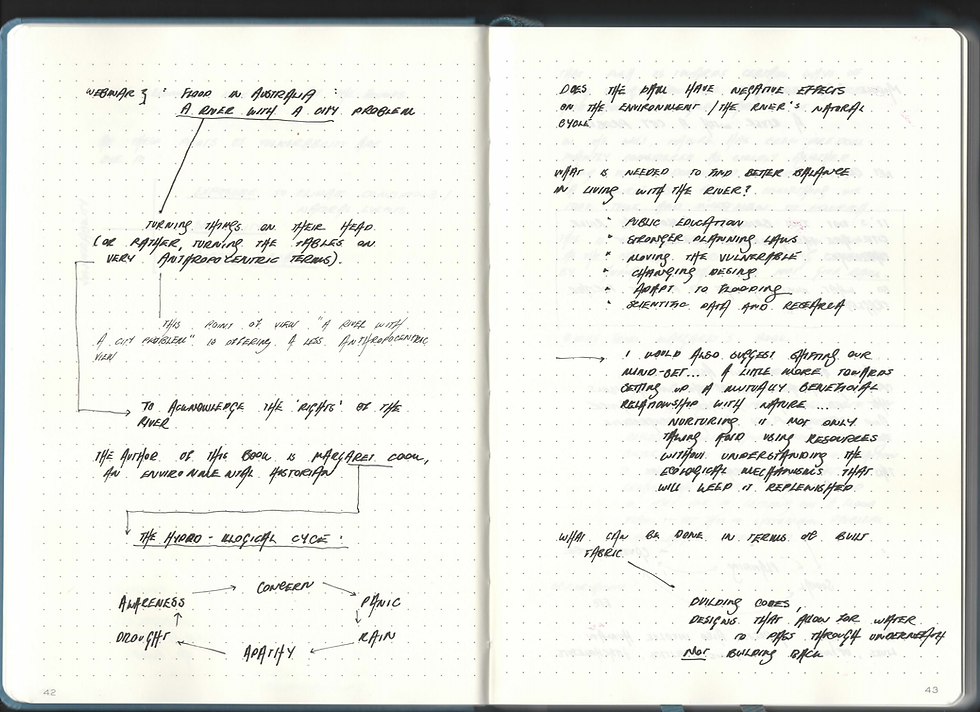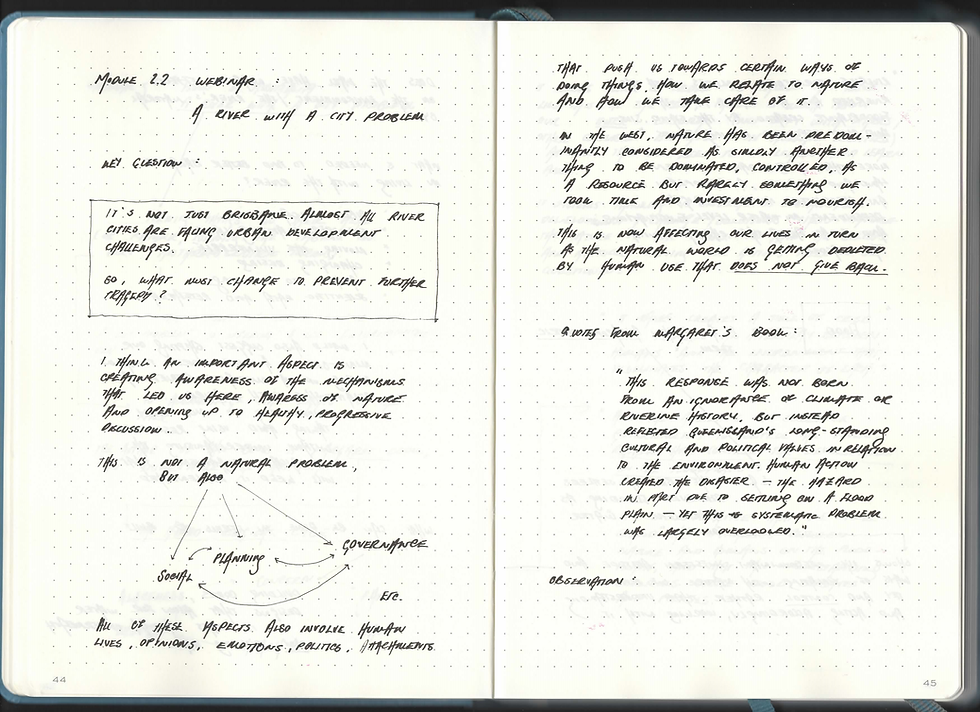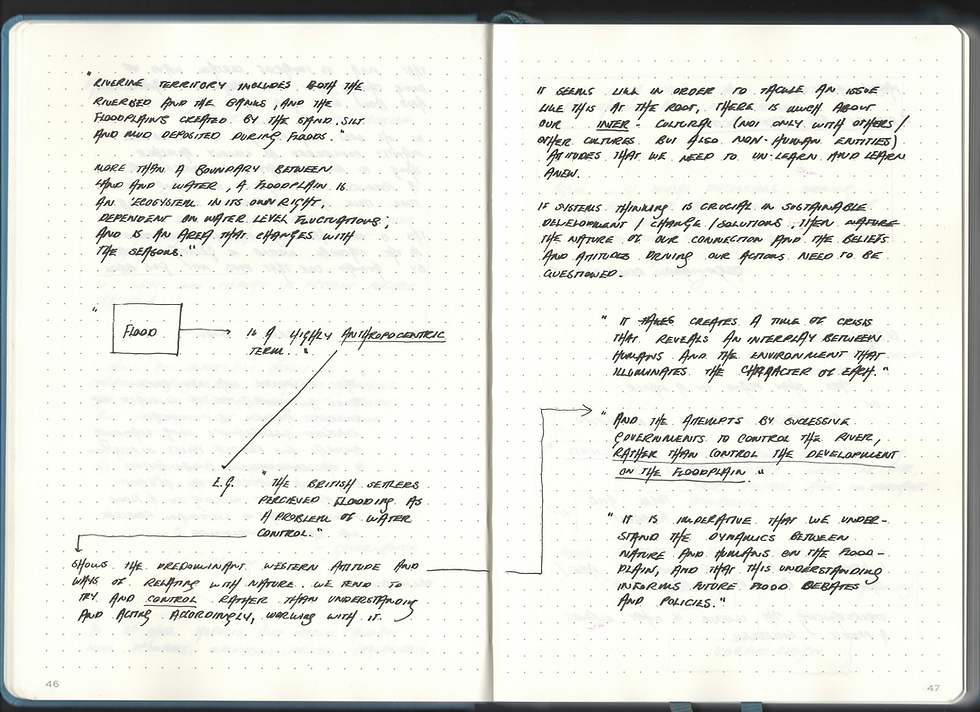A River with a City Problem
- Martina Cutajar

- Mar 7, 2022
- 3 min read
Updated: Mar 10, 2022
In Margaret Cook’s book: A River with a City Problem, the first thing that stands out about the work is how the tables are turned on the issue of flooding in Brisbane. Margaret Cook is an environmental historian, and in her book, the issues of flooding in Brisbane are investigated and described in a less anthropocentric attitude than we're perhaps used to by seeing things from the perspective of the river.

Figure 1: Margaert Cook's book: A River with a City Problem. Source: https://www.amazon.com/River-City-Problem-History-Brisbane/dp/0702260436
In Brisbane, when British settlers decided to make their home the floodplains of the river, partly because of the use of dams, it was thought that the river was something that simply needed to be controlled. What we see through Cook’s reference to Indigenous ways of living, however, is that in living with a natural phenomenon such as a river, nature needs to be nurtured and understood, it is not something that is easily controlled without consequence.
“Although individual floods are relatively short-term catastrophic events, they expose the evolution of the hazard created by humans over a longer-term. Historian Stephen Pyne suggests that a bushfire offers a lens for historical understanding, as it creates a time of crisis that reveals an interplay between humans and the environment that ‘illuminates the character of each’.” (Cook, 2012 pp. 1)
I think there is a lot that we can learn from Indigenous ways of living with nature. In the west, it has been a dominant attitude to think of nature as something apart from ourselves that is simply a resource for us to use. In many indigenous cultures, however, there is a certain, more-than-human cosmology to their way of life and attitude in which the lives of humans are deeply connected with their natural environment as they too are an intrinsic part of it. Through these ways of living, human relations with the natural environment are always perceived as a give-and-take relationship. Nature is nurtured and so it provides.
Cook acknowledges the ‘rights’ of the river, and in her book she explores the history of flooding in Brisbane and considers how we might move forward. In the past, control of the river was exercised rather than controlling the development that took place in the floodplains. How can we move forward now, considering the river and its natural patterns?
“It is imperative that we understand the dynamics between nature and humans on the floodplain, and that this understanding informs future flood debates and policies.” (Cook, 2012 pp. 2)
A notable example of projects that are taking in place in Brisbane in order to adapt to the river and its flooding patters are studios such as JDA Co. They are doing significant work targeted towards designing, retrofitting houses for fire, storm and flooding resilience. JDA Co. has even published handbooks on retrofitting for flooding in Melbourne and Queensland homes.

Figure 4: Brisbane flood design project by JDA Co. (source: https://jdaco.com.au/project/shop-row/)

Figure 5: Flood Resilient Building Guidance for Queensland homes by JDA Co. (source: https://jdaco.com.au/project/flood-resilient-building-guidance-for-queensland-homes/)

Figure 6: Integrated Water and Flood Management Strategies for Enhancing Liveability in South East Queenslance by JDA Co. (source: https://jdaco.com.au/project/water-futures-a-vision-for-flood-management/)
The main takeaways from this account would be the following three suggestions with regards to design and development around the floodplains:
Policies need to consider the river’s natural cycles and ways of replenishing the land. Development patterns and building codes need to work with the geographical characteristics of the land to ensure that built is working with the unbuilt.
Human relationship and consideration of nature needs to be re-evaluated. In the way we talk about nature and natural phenomena, the way we teach our children, write books and label natural phenomena in the first place.
Education about living with the river needs to start from a young age – that is where change happens.
Moving the vulnerable to areas that are less affected by flooding.
Designs for the built environment need to take into consideration the possibility of flooding.
An ongoing questioning and research on how as humans we have related to nature and how we might proceed forward. What could have been done better? How can we incorporate nature and its ways more into our own ways of living? How can we learn from the floods, besides exercising more and more force over nature? How can we live in symbiosis with our natural environment?
Notes from a webinar with Margaret Cook and her book:



References
Cook, M. (2019). A River with a City Problem: A History of Brisbane Floods. University of Queensland Press.




Commentaires